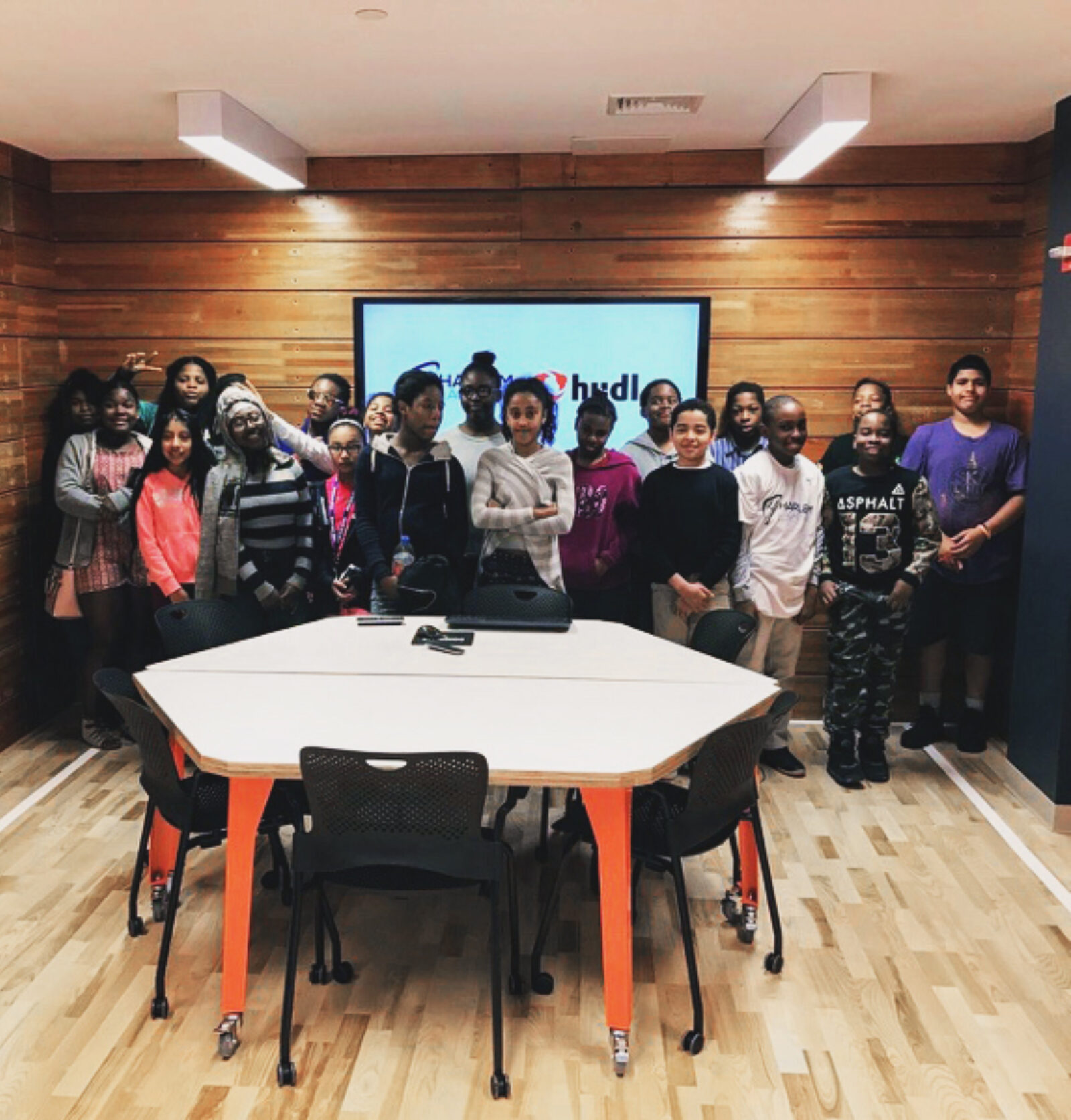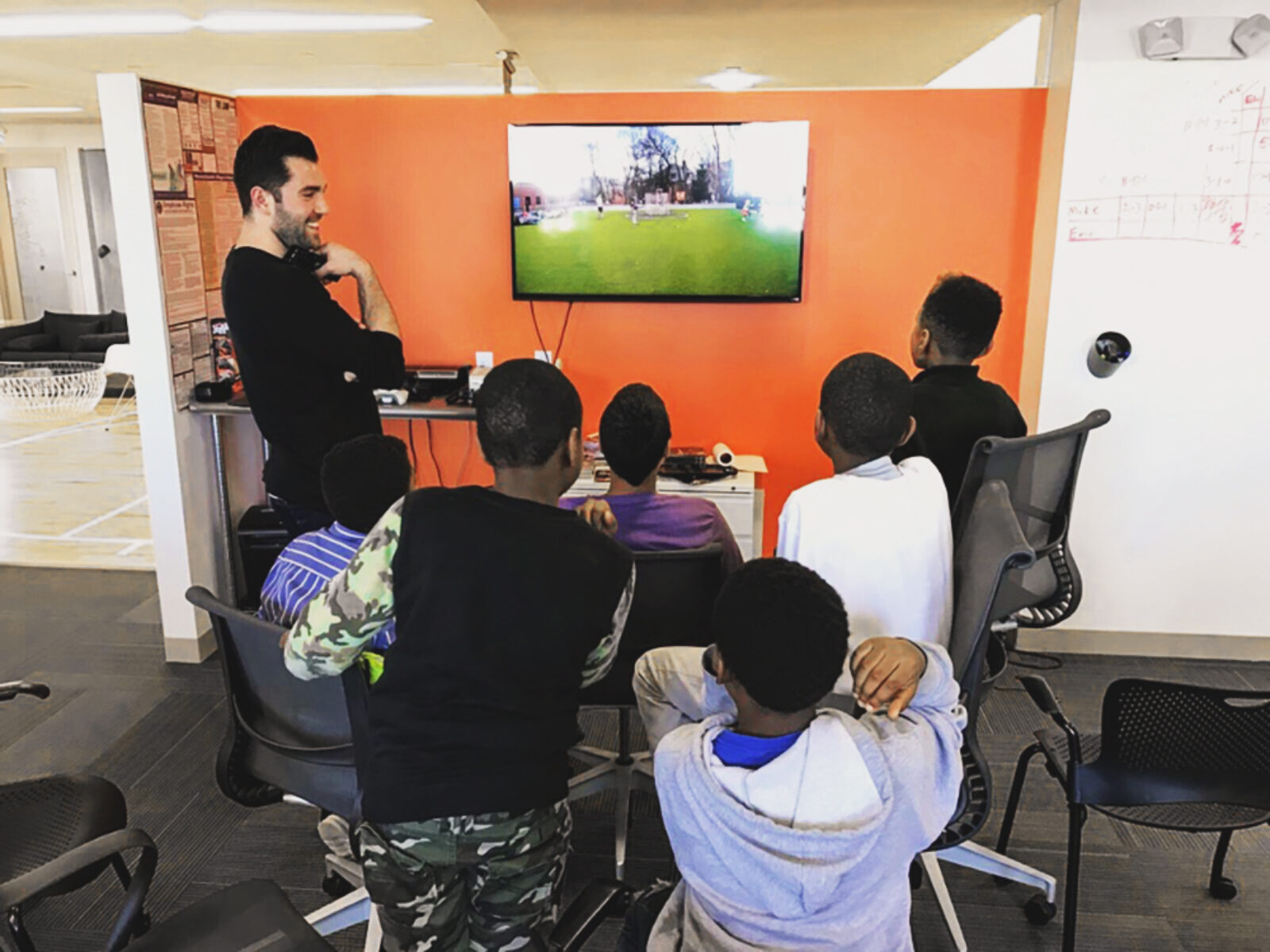What started as an effort to motivate students has turned into a program helping hundreds of youths reach their potential.
The practice pad is nothing special. It’s a small chunk of field turf surrounded by cement. The goal sits on one end, its nets holding on with whatever threads it has left. Every time someone flicks their wrist and the ball hits the back of the net, one more thread let’s go. High passes cause the ball to land on the road adjacent to the pad. Coaches yell at players to let the ball be. Don’t want anyone to get hit by the cars as they stream by.
It’s not some state of the art facility, but to Ralph Nelson, that doesn’t matter. All he needs is a place where he can play a sport he never knew he’d fall in love with: lacrosse.
How Do I Reach These Kids?
In 2008, Simon Cataldo was trying to solve an issue that every teacher faces: how do I connect with my kids? Then the special education teacher at Frederick Douglass Academy I in Harlem, New York had an epiphany his second year on the job.
He could use lacrosse as a way to inspire, motivate and encourage his kids.
“It started out with a special education teacher trying to find something that would engage with his kids and it really took off from there,” said Adrian Heneveld, program director at Young Achievers Science and Math Pilot School, the Boston branch of Harlem Lacrosse.
“Part of the appeal of lacrosse is that lacrosse isn’t a sport that’s traditionally played in the inner cities, so when colleges or boarding schools are looking at athletes they want to bring into their schools, a lot of these lacrosse players are these white, upper class families,” Eliza Halmo, program director at TechBoston Academy Girls, said. “Why shouldn’t inner city kids be able to play lacrosse?”
Stay True to What Got You Here
In less than 10 years, the program that started with 11 kids has grown to four cities, with a fifth to open in the fall, and 361 total students enrolled in the program.
Even as the program has grown, it still holds to the ideas that caused Cataldo to introduce lacrosse in the first place. Of the 361 students, 96.4 percent qualify for free and reduced lunch, and 27.5 percent receive special education services.
“We recruit a lot of students, we recruit any and every student whether they have played sports or not, whether they are the lowest academically or the highest academically,” Heneveld said. “But we really focus on the kids who need something to be there to fit in socially or a hook to start improving academically.”
The needs of their students are what drive program directors like Heneveld and Halmo to be even more visible and intertwined with their students. They have to be the glue that keeps their students on the track.
“They’re in school all day with the kids, they provide academic and behavioral support,” Halmo explained. “They’re the head coach of the lacrosse team, they’re planning and executing study hall and practice plans and then scheduling community engagement trips, so they’re fully immersed into different aspects of the kids’ lives.”
“We preach that we focus on them as people, as students and then as lacrosse players,” Heneveld said. “We back that up with how we spend our time. We’re able to be full time in the school year round so we still see them in the summers. We focus on classroom, so we can go into classrooms and work with them out of the classroom based on what the teachers want.”

Teach Someone to Fish, and Feed Them for a Lifetime
Heneveld explained it best when he said “We call ourselves a middle school intervention program.” For many boys and girls, ages 12-14 are among the most formative years of their life. Harlem Lacrosse focuses their programs to that age range in order to have the biggest impact on their students.
“We spend a lot of that time talking to them academically and talking to them about their character and them growing as people. After school we can focus on the lacrosse piece,” Heneveld said.
That focus has lead to incredible results for those that go through the programs. Harlem Lacrosse alumni have a dropout rate of 2.5 percent, which is 7 percent lower than the average.
Harlem Lacrosse alumni have gone on to attend Bates College, Colby College, Connecticut College, Gettysburg College, Haverford College, Hobart College, Tufts University, the University of Virginia, and the U.S. Military Academy at West Point.
“As middle school students, they have a lot of life in front of them, so we’re trying to give them opportunities along the way that will set them up to have a path that they determine themself,” Heneveld said.
The sky is a beautiful shade of blue today. Normally, Nelson wouldn’t be looking at it, but he is now. As the ringing in his ears quiets down, he slowly begins to remember what happened. He wasn’t paying attention to the other players, he was more focused on the ball. That opened the window, and any time a 13-year-old can light up someone else, they’re going to take it.

